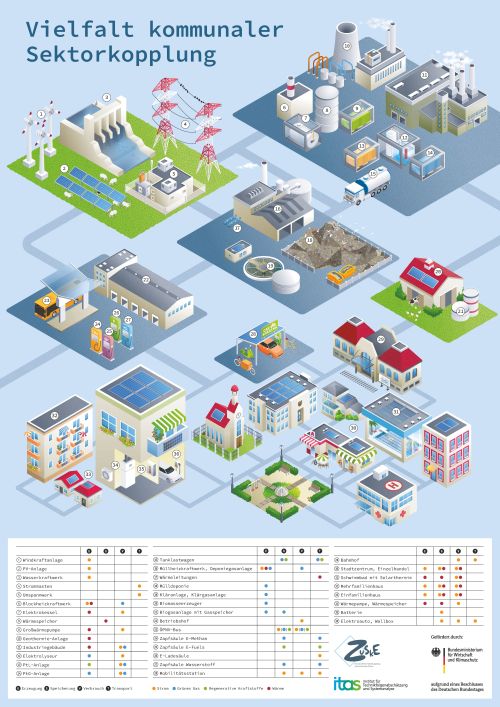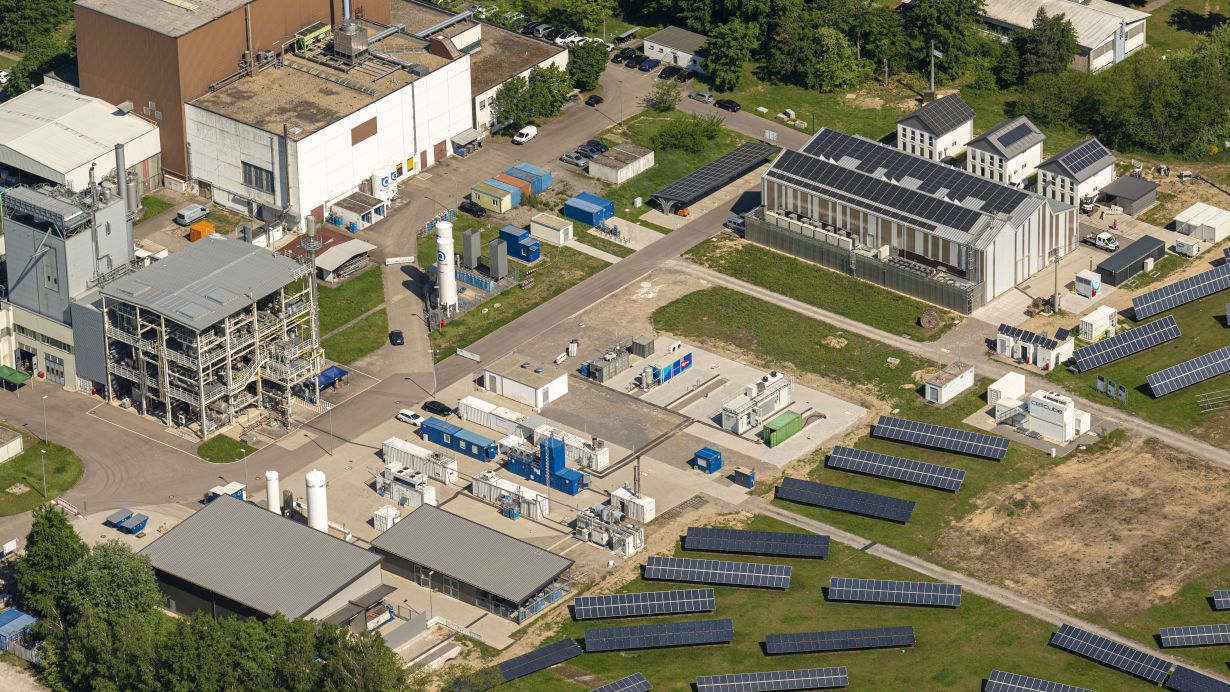Municipalities as the smallest administrative units play a major role in the implementation of the energy transition. They can support citizens in better using the heat from waste water or they can make the equipment of new buildings with photovoltaic facilities mandatory in order to increase the use of renewable energy sources. Technology assessment experts of Karlsruhe Institute of Technology (KIT) launched the ZuSkE project to find ways of planning and implementing coupling of the power, heat, and transport sectors. They cooperated closely with the municipalities of Berlin, Freilassing, and Walldorf. The project team compiled a catalog of 100 tested measures to provide orientation and developed tools to support municipalities.
“The energy transition is made by humans who live and work in cities and municipalities. It is therefore logical to make the energy transition start on the local level,” says Dr. Dirk Scheer. He conducts research at KIT’s Institute of Technology Assessment and Systems Analysis (ITAS) and coordinated the project “ZuSkE: Die Zukunft der Sektorkopplung auf kommunaler Ebene” (ZuSkE: Future Sector Coupling on the Municipal Level). “As we are going to replace fossil energy sources by electricity, we can no longer treat the different sectors separately,” Scheer adds. The project funded by the Federal Ministry for Economic Affairs and Climate Action was aimed at developing approaches as to how municipalities can couple the transport, heat, and electricity sectors such that rapid and efficient decarbonization can be achieved.
Municipalities Are Energy Suppliers and Regulatory Authorities, and They Can Bring the Parties Involved Together
To this end, the researchers cooperated with representatives of politics, utility companies, administration, industry, and citizens from Berlin, Freilassing, and Walldorf. The result: Municipalities have a number of options to push sector coupling. “Utilities can increasingly use geothermal sources, expand district heating systems, or install power-to-gas systems to use excessive power from wind or solar facilities for heat supply,” says Ines Jendritzki, ITAS, member of the ZuSkE project team.
As municipalities own and run big properties, they can set a good example and use solar power systems in their buildings and connect them to charging stations for their electric vehicle fleets. Municipal councils can adopt the corresponding legal framework conditions and push the procurement of cargo bikes or develop a municipal heating plan. “Not least, cities and municipalities can make the relevant partners meet as a basis for change,” Jendritzki says.

sectors of municipalities. (Figure: ITAS, KIT)
Catalog of 100 Tested Measures for Orientation
According to the researchers, it is of crucial importance that every municipality develops packages of coordinated measures that are tailored to local conditions. To facilitate this, they compiled information material to help municipalities embark on sector coupling.
The catalog published lists 100 already tested sector coupling measures. It is intended to provide orientation and to help the municipalities develop own transformation strategies. The researchers conceived a strategy box, a didactic tool for representatives of municipalities to design energy transition strategies. A “10 points plan” has been set up to illustrate the central steps of municipal sector coupling, from the first status analysis to the development of a transformation pathway to an adequate communication strategy.
KIT’s project partners were the Forschungsstelle für Energiewirtschaft (FfE, Research Institute for Energy Economics and Industry) and the Federation of German Scientists (VdW) with their Civil Society Platform for the Energy Transition and Dialog.
More Information on the Project and Project Findings (in German):
https://kommunale-sektorkopplung.ffe.de/
Original Publication
Lisa Schmieder, Dirk Scheer, Johannes Gaiser, Ines Jendritzki, Benjamin Kraus: Municipalities as change agents? Reconsidering roles and policies in local energy sector-coupling. Energy Research & Social Science, 2023.
https://doi.org/10.1016/j.erss.2023.103210
In close partnership with society, KIT develops solutions for urgent challenges – from climate change, energy transition and sustainable use of natural resources to artificial intelligence, sovereignty and an aging population. As The University in the Helmholtz Association, KIT unites scientific excellence from insight to application-driven research under one roof – and is thus in a unique position to drive this transformation. As a University of Excellence, KIT offers its more than 10,000 employees and 22,800 students outstanding opportunities to shape a sustainable and resilient future. KIT – Science for Impact.

